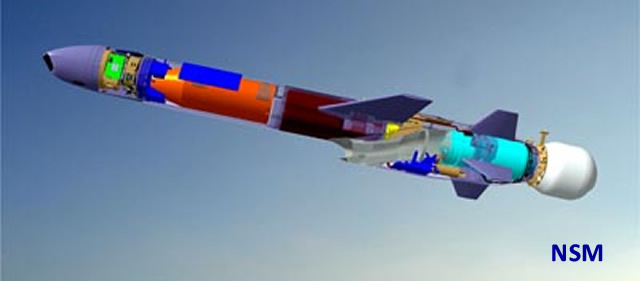

The JSM, that was first air-dropped by an F-16 in 2015, features long-range (believed to be in excess of 150 nautical miles), low RCS (radar cross section) and high maneuverability, speed and accuracy. The aircraft will be able to carry two such missiles internally, while additional ones could be carried on the external wing pylons (obviously affecting the overall Low Observability of the aircraft).

The new missile, developed in partnership with the Norwegian Ministry of Defence, and in close cooperation with the Norwegian Defence Research Establishment, is the only powered anti-ship missile that will fit inside the F-35A and C models weapons bays to enhance the 5th generation aircraft’s ASuW (Anti-Surface Warfare) capabilities. The JSM is a multi-role weapon derived from the Naval Strike Missile (NSM), also developed by Kongsberg Defence & Aerospace and already operational with the Royal Norwegian Navy.

The first drop test of a Joint Strike Missile has been successful carried out using F-35A AF-01 from Edwards Air Force Base in February. It would not be a prophecy to say that the JSM will also be preferred by many F-35 users in the future and will be used in many vital conflicts.Ĭheck out Naval Library App to find out the specifications of the Joint Strike Missile.The Norwegian Defense Materiel Agency has just released the first photos from a successful test conducted in February of the Joint Strike Missile (JSM). Even this fact is proof of how successful NSM and JSM are with their superior features. Interestingly, these two countries prefer NSM and JSM instead of developing a new system. Japan and the USA, which see this region as a priority security area, have advanced missile design and production capabilities. The Western Pacific is the hottest region of the Second Cold War in the seas.

That’s why Japan’s JSM acquirement is necessary enough to change the balances in the region. The same situation is also possible for the Japanese Lightning IIs to take off Chitose and Misawa airbases against the Russian Navy. The F-35s took off from these bases, can reach a suitable range to attack all main naval facilities of the East Sea Fleet of the Chinese Navy without any radar detection with the JSMs. In addition, Japan Air Self-Defense Forces have two important airbases on the Kyushu Island Nyutabaru Airbase and Tsuiki Airfield.Īlso, there is one big airbase of Japan’s Maritime Self-Defense Forces on the island, Kanoya Airfield. However, after 2017, the USA has lifted this ban. So, Japan Air Self-Defense Force had only a limited amount of precision-guided bombs. After the Second Cold War, the Allies had constitutionally banned Japan from possessing guided land-attack missiles. Japan’s acquirement of JSM is something that deserves special attention. Kongsberg image Effect on the power balance in the region Australia, South Korea, the UK, and the USA have announced their interest in this missile for use with their F-35s. Japan and Norway have already ordered the JSM. If everything goes as planned, the JSM would be operational by 2025.
#JOINT STRIKE MISSILE SOFTWARE#
Kongsberg Defense & Aerospace and project partner Lockheed Martin aims to complete the necessary software updates using the F-35 Lightning II by 2021. Joint Strike Missile to be operational by 2025Īfter completing the development phase, the first test fire was conducted from an F-16 Fighting Falcon in 2018. But in this case, the maximum range of the missile reduces to 370 kilometres. It can be equipped with a 375-kilogram warhead. The 4-meter long JSM has a stowed wingspan of 0.48 meters. The dimension of the missile is also different from its ship-launched version. Unlike the NSM, the JSM would reach the maximum range of over 185 kilometres in low-low-low flight profile and over 560 kilometres in hi-hi-low flight profile. It has a two-way communications line so that the JSM can communicate with the command centre or other missiles in the air. The F-35 will carry two of these in its internal bays and two additional missiles externally. Norway funds this JSM development program with Australia. The JSM is still not operational, but it will be one of the two proper missile sizes for the weapon bays of this aircraft. Moreover, it has suitable sizes for the weapon bays of the F-35 Lightning II. The Joint Strike Missile (JSM), an air-launched multi-role version of the Naval Strike Missile, is one of the two missiles in its class compatible with the F-35’s internal weapon bays in the world.


 0 kommentar(er)
0 kommentar(er)
